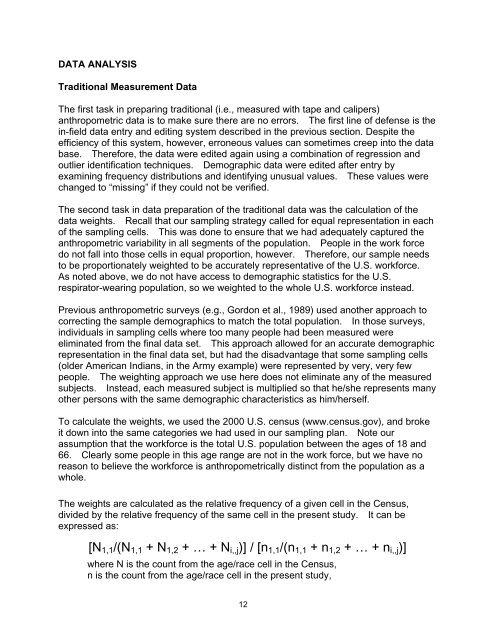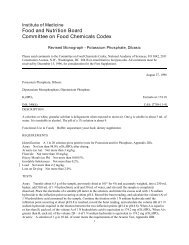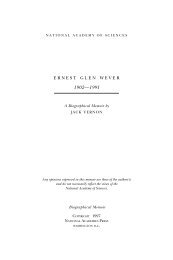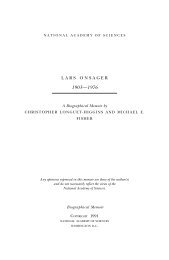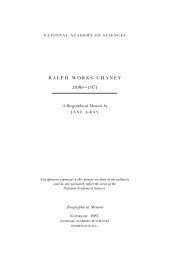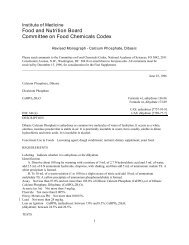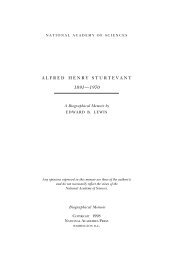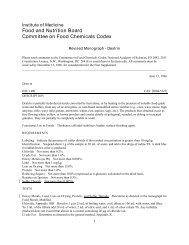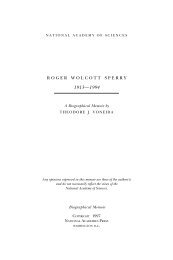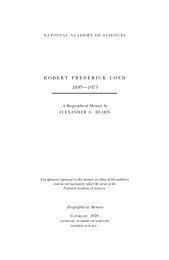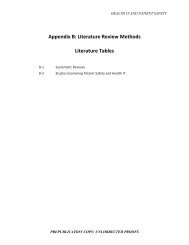A HEAD-AND-FACE ANTHROPOMETRIC SURVEY - The National ...
A HEAD-AND-FACE ANTHROPOMETRIC SURVEY - The National ...
A HEAD-AND-FACE ANTHROPOMETRIC SURVEY - The National ...
You also want an ePaper? Increase the reach of your titles
YUMPU automatically turns print PDFs into web optimized ePapers that Google loves.
DATA ANALYSIS<br />
Traditional Measurement Data<br />
<strong>The</strong> first task in preparing traditional (i.e., measured with tape and calipers)<br />
anthropometric data is to make sure there are no errors. <strong>The</strong> first line of defense is the<br />
in-field data entry and editing system described in the previous section. Despite the<br />
efficiency of this system, however, erroneous values can sometimes creep into the data<br />
base. <strong>The</strong>refore, the data were edited again using a combination of regression and<br />
outlier identification techniques. Demographic data were edited after entry by<br />
examining frequency distributions and identifying unusual values. <strong>The</strong>se values were<br />
changed to “missing” if they could not be verified.<br />
<strong>The</strong> second task in data preparation of the traditional data was the calculation of the<br />
data weights. Recall that our sampling strategy called for equal representation in each<br />
of the sampling cells. This was done to ensure that we had adequately captured the<br />
anthropometric variability in all segments of the population. People in the work force<br />
do not fall into those cells in equal proportion, however. <strong>The</strong>refore, our sample needs<br />
to be proportionately weighted to be accurately representative of the U.S. workforce.<br />
As noted above, we do not have access to demographic statistics for the U.S.<br />
respirator-wearing population, so we weighted to the whole U.S. workforce instead.<br />
Previous anthropometric surveys (e.g., Gordon et al., 1989) used another approach to<br />
correcting the sample demographics to match the total population. In those surveys,<br />
individuals in sampling cells where too many people had been measured were<br />
eliminated from the final data set. This approach allowed for an accurate demographic<br />
representation in the final data set, but had the disadvantage that some sampling cells<br />
(older American Indians, in the Army example) were represented by very, very few<br />
people. <strong>The</strong> weighting approach we use here does not eliminate any of the measured<br />
subjects. Instead, each measured subject is multiplied so that he/she represents many<br />
other persons with the same demographic characteristics as him/herself.<br />
To calculate the weights, we used the 2000 U.S. census (www.census.gov), and broke<br />
it down into the same categories we had used in our sampling plan. Note our<br />
assumption that the workforce is the total U.S. population between the ages of 18 and<br />
66. Clearly some people in this age range are not in the work force, but we have no<br />
reason to believe the workforce is anthropometrically distinct from the population as a<br />
whole.<br />
<strong>The</strong> weights are calculated as the relative frequency of a given cell in the Census,<br />
divided by the relative frequency of the same cell in the present study. It can be<br />
expressed as:<br />
[N 1,1 /(N 1,1 + N 1,2 + … + N i,,j )] / [n 1,1 /(n 1,1 + n 1,2 + … + n i,,j )]<br />
where N is the count from the age/race cell in the Census,<br />
n is the count from the age/race cell in the present study,<br />
12


